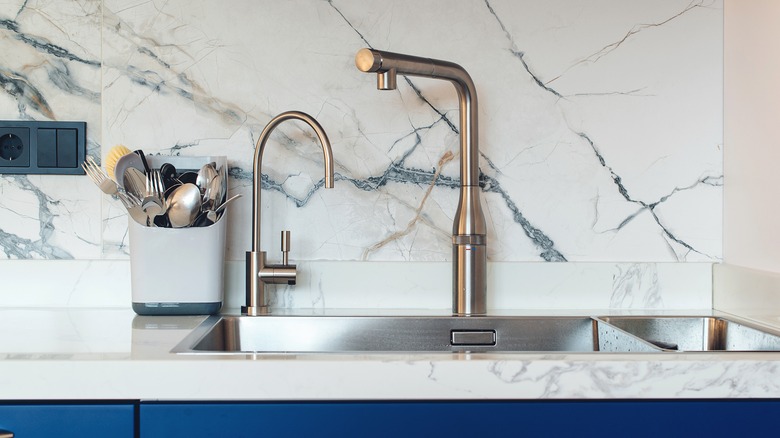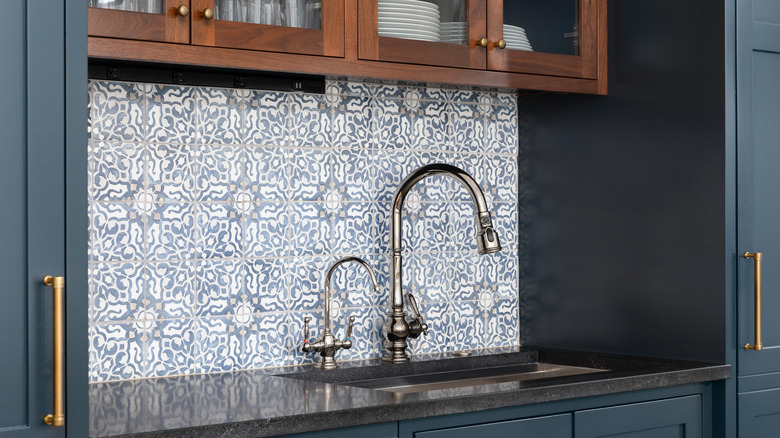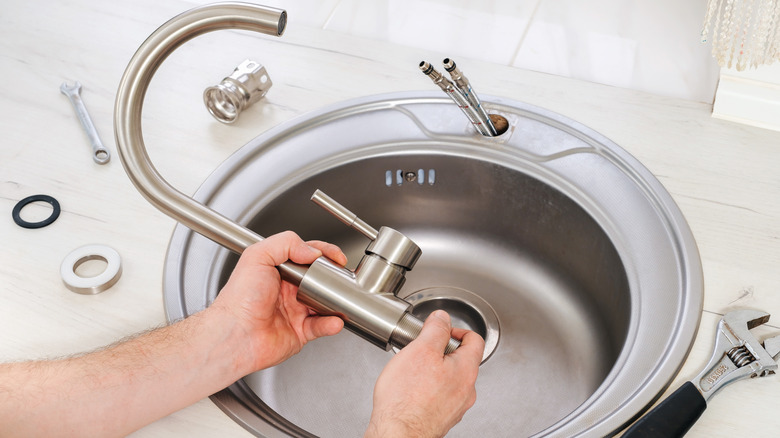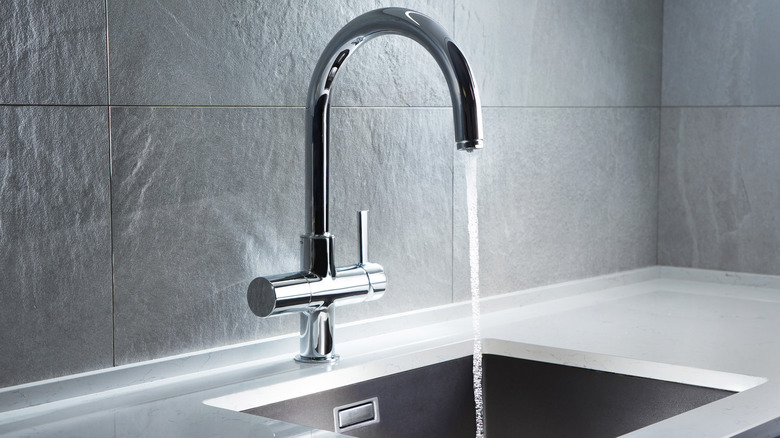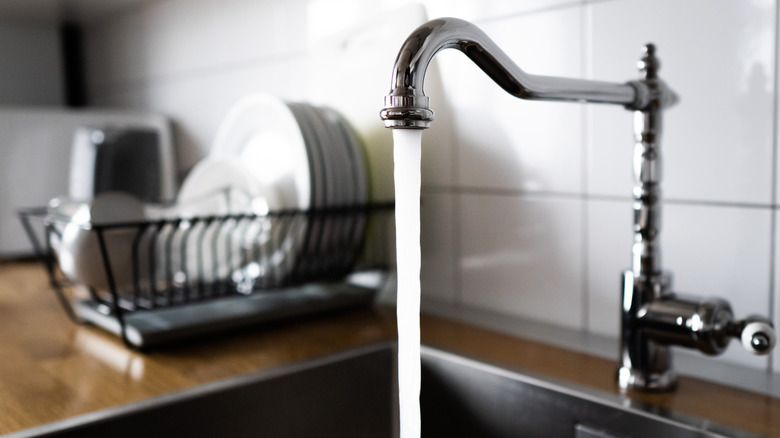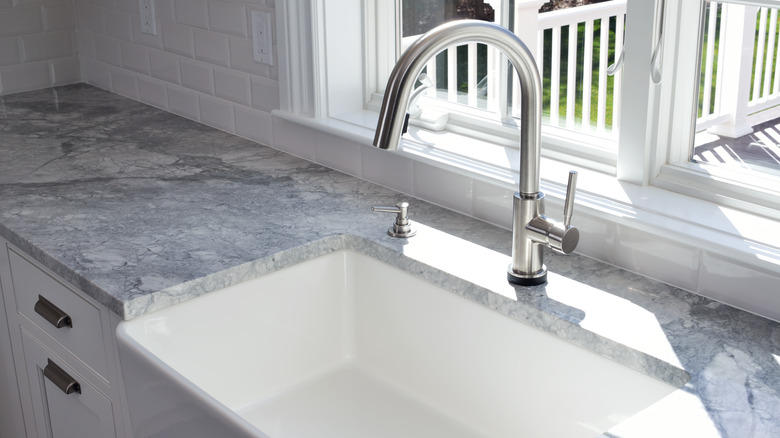5 Tips For Choosing The Perfect Kitchen Faucet For Your Sink
According to KurtsKitchen, the kitchen area is among the busiest spaces in most households. For this reason, it is important to make daily operations simpler by installing the right appliances and fixtures. One of the must-have fixtures for your kitchen is a reliable faucet. A good kitchen faucet will not only bring the necessary glam into this vital space but also make everyday operations effortless. However, landing the right kitchen faucet is easier said than done. They come in a variety of styles, materials, and finishes that can be pretty confusing and overwhelming.
The kitchen faucet is among the few durable fixtures that will last long if given the proper care. KitchenSeer mentions that a good quality faucet can give you up to 20 years of service. For this reason, it is important that you find an option that you like and enjoy using daily in the kitchen. Homeowners change faucets for different reasons; however, if you are interested in giving your kitchen a facelift, replacing the faucets is an excellent place to start. So before going out shopping, let's take a look at a few things that you should put in mind before making any random purchase.
1. Pay attention to the height and reach
Before picking just any faucet from the store or an online vendor, think about the height and reach of your sink size. You might not know this, but the faucet's height and reach have much to do with how functional this fixture will be. The height of the faucet is the vertical distance from the countertop's surface to the top of the faucet spout, via Sunrise Specialty. While there is no standard height for every setup, the sink size should generally give you some direction as far as the faucet's height is concerned.
If you have a shallow sink, consider installing a faucet with a shorter height to prevent excessive splashing. Another point worth mentioning is that the higher the spout is, the easier it will be to wash and clean larger kitchenware. While getting the height right is necessary, nailing the reach is equally important. Ask yourself whether the faucet will give you enough reach for comfort when using the sink. The spout doesn't need to be too far back or forward; it should be installed directly over the drain.
2. The mounting requirements
When considering changing your kitchen faucets, the type of sink will determine what option will be ideal for you. If you are going with your current sink, you must factor in its hole configurations. This is especially true if you are thinking about changing from a single-handle to a double-handle faucet. If you are considering installing the faucets DIY, your safest bet is choosing one with the same hole configurations as your current one.
For instance, upgrading to a double-handle from a single-handle will require you to drill extra holes, which is a lot of work for a regular homeowner. Alternatively, consider calling a plumber to help you with the upgrade. On the other hand, downgrading to a single-handle faucet from the double-handle counterparts is relatively easy because you can cover the extra holes or even install soap or lotion dispensers for extra convenience, via TruBuild Construction.
3. Water usage feature
If you are concerned about your monthly water bills, consider installing low-flow faucets to help you use significantly less water to accomplish daily activities. While others claim that low-flow fixtures have less water pressure, you will be delighted to find out that this cannot be any further from the truth. According to Pioneer Industries, such fixtures will help you use up to 30% less water with the same performance. The good news is that low-flow kitchen faucets come in different styles; therefore, getting the right fit for you shouldn't be a problem.
It goes without saying that faucets with water-saving technology are often more expensive than their traditional counterparts. However, if you are not ready to invest in a faucet with this technology, your other option for saving water is to add an aerator to your faucet of choice. This device is easy to install on your faucet and will reduce water usage, similar to low-flow technology. Besides saving money on your monthly water bills, you will also contribute positively to the local and global environment.
4. Features
Well, here comes the fun part! There are several faucet features, each with a different degree of convenience and functionality, for instance, the side sprayer. Such faucets feature an extra spout on the sink or the countertop. The side sprayer comes in handy when it comes to washing and cleaning. This feature not only gives you more control of the water but also fills containers relatively faster. Another handy feature you should know about is the pull-out or the pull-down spout.
The spouts are often shorter than average, allowing you to save on precious countertop space. What's more, a spraying spout also reduces splashing. If you are a fan of technology, consider going for the touchless options that have become quite popular recently. This type of faucet uses touch-free sensors to start and stop the water flow in response to a particular motion, via Phend Plumbing. Also, since the water only runs when initiated, this faucet allows you to save on water bills. However, you should expect to pay more for every bell and whistle this smart device comes with.
5. Consider the style
Style is one of the most significant decisions you must make when choosing the right kitchen faucet. While the primary function of faucets is to provide easy access to water, there is no denying that they contribute to the kitchen's aesthetics. Remember, the appeal and style of your kitchen are a direct reflection of your personality. Fortunately, regardless of the faucet design, most come in different styles, for instance, traditional, modern, transitional, and classic, to mention a few. The trick to finding the right style is taking inspiration from what is around. But be sure to go with a faucet style that complements your interior design.
Another aspect worth paying attention to is the finish. A good finish is beneficial to the aesthetics and will go a long way in making the cleanup process effortless. Keep in mind that the kitchen area is among the few places in the house that need to be spotlessly cleaned. If you are looking for a durable, versatile, and easy-to-clean finish, FaucetList recommends a chrome finish. Chrome faucets are widespread for residential use and heavy-duty commercial operations, such as restaurants.

